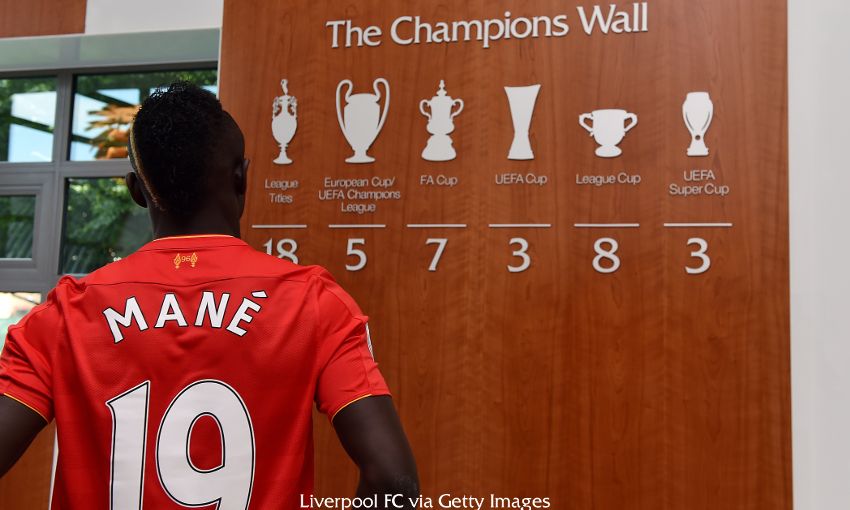It is safe to say that the summer months are not exactly the calmest of times to be associated with Southampton. As the director of football Les Reed alluded to in a recent club interview, the moment that the season ends and the players think of switching off on holiday, the off-field staff at the Saints switch on.

Source: liverpoolfc.com
For those three months between May and August, the team behind the team are called into action. The final weeks of the season are almost their pre-season as such; the transfer window is coming.
The summer of 2014 was a watershed moment. Just two weeks after Mauricio Pochettino had guided Southampton to their joint-highest Premier League finish, he was gone. A squad that had grown incredibly loyal to the Argentine were now in disarray in leaving to Tottenham.
Pochettino’s departure was the catalyst for the storm that was about to unfold. Rickie Lambert, arguably the first player after Matt Le Tissier to really become a deity in the eyes of the club’s fanbase, left to join boyhood club Liverpool. Luke Shaw, Dejan Lovren, Adam Lallana and Calum Chambers would follow him out of the door.
Yet in the eye of the storm, those who operate in the halls of power at St Mary’s were calm. The fans were worried, players and staff were just as concerned, but the newly formed board acted fast.
Ronald Koeman was appointed, his big-name status serving to calm the nerves. Replacements for those who left were brought in; Graziano Pellè, Ryan Bertrand, Dušan Tadić, Shane Long and Fraser Forster were recruited as the squad restructuring took place before the first ball was kicked.
The season may have started with defeat, ironically away at Liverpool where Lambert, Lallana and Lovren had all just moved for a combined total of £49m, but it was the final day of the window where two important arrivals were brought in that proved pivotal to Southampton’s aspirations.
The first was Toby Alderweireld; unwanted at Atlético Madrid, the centre-back not only revived his career after a stutter in Spain but helped his new team to a Prem-best position of seventh, as a key part of why the Saints had the second best defensive record behind champions Chelsea.
Whilst the Belgian only arrived on loan and signed for Tottenham the following summer, the second arrival proved just as crucial. Sadio Mané arrived in Southampton as somewhat of an unknown, despite being recruited from Austrian champions Red Bull Salzburg for £11.8m.
It is easy to see now why the club were keen to bring him in. Whilst Liverpool’s scouting department did not rate him highly enough according to German journalist Raphael Honigstein, the Saints could afford to gamble on someone that Koeman himself had witnessed take apart Dutch giants Ajax in their own backyard.
Some of his qualities are obvious from the moment he is first seen. His speed something that stands out straight away, and is a key part of his game along with his dribbling ability that makes him very difficult to stop. Whether in the three positions behind the striker or as a false nine, the fact he likes to wander makes him very difficult to keep quiet for the whole game.
Yet because of the obviousness of those abilities, the other parts of his game take a while to be appreciated. His willingness to track back and his vision in spotting a chance to pass or shoot make it obvious why Jurgen Klopp will be so happy to have brought him to Anfield, even if his pricetag could reach £36m according to journalists close to Southampton.
The German will know all to well how much chaos he can cause. Whilst Liverpool fans may have bemoaned Martin Skrtel’s introduction to the game at St Mary’s in March, it was Mané stepping off the bench at the interval, and not the Slovakian, who played the biggest part in Southampton turning round a 2-0 deficit at half-time to win 3-2.
Yet perhaps that introduction is a big symbol in what can make Mané incredibly frustrating. His talent was obvious to see when he scored twice in the victory over Liverpool, and he had similarly dominant games against Chelsea at Stamford Brige and both Norwich, Manchester City and Crystal Palace at St Mary’s.
But whilst he grabbed 12 league goals last season, eight of those came in the same number of games in the final eight matches of the season. The first of his brace against Liverpool in March broke a barren run that lasted almost five months, and was his first league goal since the reverse fixture at Anfield in October.
He very nearly did not even feature against the Reds because of a red card against Stoke that was rightly overturned, but question marks over his attitude are perhaps fair. An example of that was he went on strike and refused to play against Malmo for Salzburg in a crucial Champions League qualifier; the fact they then lost made sure he was public enemy number one.
Whilst Mané never went on strike, the indiscipline of him being late before matches twice added with his behaviour in his final days in Austria meant that with two years left on his contract, playing hardball over keeping him made no sense especially with the size of the offer on the table.
It makes sense for all parties involved. The forward leaves as a more refined and consistent player for his two years on the South Coast, and gets a salary under a manager who many will be drawn to play for.
Liverpool have acquired a player who, with further training and the right tactical freedom, can go to be a world-class forward, and Southampton get £26m profit as reward for their risk. The task as it was in 2014 was to replace; with that kind of money in the transfer budget, the next Mané is likely to be already in their sights.
Massive thanks to George Galpin for this fantastic piece, make sure you follow him on twitter.
Max
Latest posts by Max (see all)
- Trent Alexander-Arnold talks about Henderson, success and the younger years - July 2, 2020
- Bournemouth vs Liverpool: Review - December 7, 2019
- Liverpool Loan Watch: September 2018 - October 12, 2018
